
Concept explainers
Draw the organic products formed in each reaction.
a.  d.
d.  g.
g. 
b.  e.
e.  h.
h. 
c.  f.
f. 
(a)
Interpretation: The organic product formed in the given reaction is to be drawn.
Concept introduction: The dehydrohalogenation reaction of primary alkyl halide mostly favors
Answer to Problem 8.54P
The organic product formed in the given reaction is,
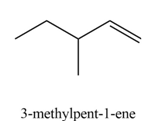
Explanation of Solution
The given reaction involves primary alkyl halide and strong bulky base. Primary alkyl halides can undergo substitution as well as elimination reactions. Since, the base is strong and bulky, it undergoes elimination reaction through
The corresponding reaction is shown below.

Figure 1
(a) The organic product formed in the given reaction is drawn in Figure 1.
(b)
Interpretation: The organic product formed in the given reaction is to be drawn.
Concept introduction: The dehydrohalogenation reaction of primary alkyl halide mostly favors
Answer to Problem 8.54P
The organic product formed in the given reaction is,
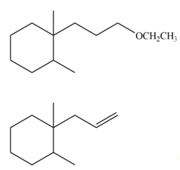
Explanation of Solution
In the given reaction, the alkyl halide is primary and base is strong, negatively charged base as well as nucleophile. Primary alkyl halides can undergo substitution as well as elimination reactions. Since, the base is strong, and also a strongnucleophile, the given halide undergoes substitution reaction through
The corresponding reaction is shown below.
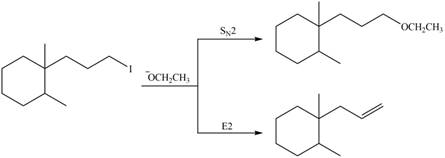
Figure 2
The organic product formed in the given reaction is drawn in Figure 2.
(c)
Interpretation: The organic product formed in the given reaction is to be drawn.
Concept introduction: A carbon atom bonded to two halogen groups is called germinal dihalides. Geminal dihalides undergo double dehydrohalogenation reaction in the presence of excess base to form alkyne as the final product. The reaction prefers elimination pathway.
Answer to Problem 8.54P
The organic product formed in the given reaction is,
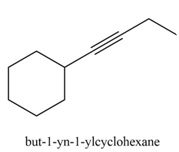
Explanation of Solution
In the given reaction, germinal dihalide is the starting material and amine base is strong, negatively chargedand present in excess amount
The corresponding reaction is shown below.

Figure 3
The organic product formed in the given reaction is drawn in Figure 3.
(d)
Interpretation: The organic product formed in the given reaction is to be drawn.
Concept introduction: The dehydrohalogenation reaction of primary alkyl halide mostly favors
Answer to Problem 8.54P
The organic product formed in the given reaction is,
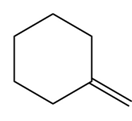
Explanation of Solution
In the given reaction, the alkyl halide is primary and base is strong, but non-nucleophilic. Primary alkyl halides can undergo substitution as well as elimination reactions. Since, the base is strong and non-nucleophilic, it undergoes elimination reaction through E2 pathway.
The corresponding reaction is shown below.

Figure 4
The organic product formed in the given reaction is drawn in Figure 4.
(e)
Interpretation: The organic product formed in the given reaction is to be drawn.
Concept introduction: The dehydrohalogenation reaction of primary alkyl halide mostly favors
Answer to Problem 8.54P
The organic product formed in the given reaction is,

Explanation of Solution
In the given reaction, the alkyl halide is secondary and base is a strong, negatively charged bulky base. Secondaryalkyl halides can undergo substitution as well as elimination reactions. Since, the base is strong and bulky it undergoes elimination reaction through E2 pathway.
The corresponding reaction is shown below.

Figure 5
The organic product formed in the given reaction is drawn in Figure 5.
(f)
Interpretation: The organic product formed in the given reaction is to be drawn.
Concept introduction: The dehydrohalogenation reaction of primary alkyl halide mostly favors
Answer to Problem 8.54P
The organic product formed in the given reaction is,
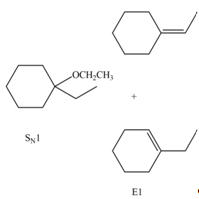
Explanation of Solution
The given reaction involves tertiary alkyl halide, weak base that is also a weak nucleophile. These conditions make the given halide (tertiary) suitable to undergo either substitution by
The corresponding reaction is shown below.
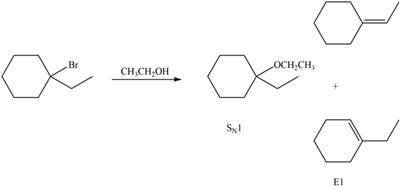
Figure 6
The organic product formed in the given reaction is drawn in Figure 6.
(g)
Interpretation: The organic product formed in the given reaction is to be drawn.
Concept introduction: Vicinal dihalides are the compounds in which the adjacent carbon atoms possess halogen groups (one on each carbon). These dihalides yield alkynes when treated with two equivalents of sodamide
Answer to Problem 8.54P
The organic product formed in the given reaction is,
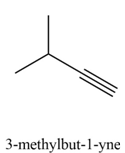
Explanation of Solution
The given alkyl halide is vicinal dihalide.
Vicinal dihalides are the compounds in which the adjacent carbon atoms possess halogen groups (one on each carbon). These dihalides yield alkynes when treated with two equivalents of sodamide
The corresponding reaction is shown below.
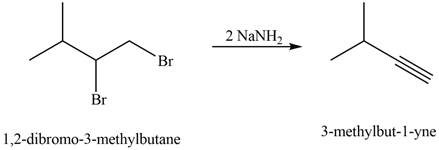
Figure 7
The organic product formed in the given reaction is drawn in Figure 7.
(h)
Interpretation: The organic product formed in the given reaction is to be drawn.
Concept introduction: The dehydrohalogenation reaction of alkyl halide mostly favors
Answer to Problem 8.54P
The organic product formed in the given reaction is,
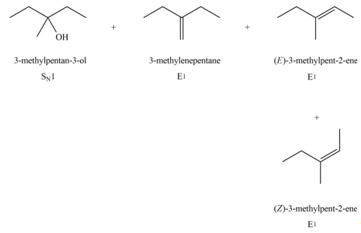
Explanation of Solution
The given alkyl halide is tertiary. Water is a weak base. These conditions make the given halide (tertiary) suitable to undergo substitution as well as elimination reaction
The corresponding reaction is shown below.
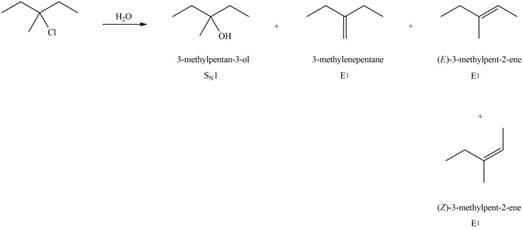
Figure 8
The organic product formed in the given reaction is drawn in Figure 8
Want to see more full solutions like this?
Chapter 8 Solutions
Organic Chemistry
Additional Science Textbook Solutions
Organic Chemistry (9th Edition)
EBK INTRODUCTION TO CHEMISTRY
Chemistry: The Central Science (13th Edition)
Chemistry: An Introduction to General, Organic, and Biological Chemistry (13th Edition)
Organic Chemistry
Chemistry: A Molecular Approach
- Draw the organic products for A and B.arrow_forwardDraw a stepwise mechanism for the following reaction that forms ether D. D can be converted to the antidepressant fluoxetine (trade name Prozac) in a single step.arrow_forwardDraw a stepwise mechanism for the following reaction, a key step in the synthesis of linezolid, an antibacterial agent.arrow_forward
- Draw a stepwise mechanism for the following reaction that forms ether D. D can be converted to the antidepressant uoxetine (trade name Prozac) in a single step.arrow_forwardDraw a stepwise mechanism for the sulfonation of an alkyl benzene such as A to form asubstituted benzenesulfonic acid B. Treatment of B with base forms a sodium salt C that canbe used as a synthetic detergent to clean away dirt.arrow_forwardDraw a stepwise mechanism for the following reaction, a key step in the synthesis of conivaptan (trade name Vaprisol), a drug used in the treatment of low sodium levearrow_forward
 ChemistryChemistryISBN:9781305957404Author:Steven S. Zumdahl, Susan A. Zumdahl, Donald J. DeCostePublisher:Cengage Learning
ChemistryChemistryISBN:9781305957404Author:Steven S. Zumdahl, Susan A. Zumdahl, Donald J. DeCostePublisher:Cengage Learning ChemistryChemistryISBN:9781259911156Author:Raymond Chang Dr., Jason Overby ProfessorPublisher:McGraw-Hill Education
ChemistryChemistryISBN:9781259911156Author:Raymond Chang Dr., Jason Overby ProfessorPublisher:McGraw-Hill Education Principles of Instrumental AnalysisChemistryISBN:9781305577213Author:Douglas A. Skoog, F. James Holler, Stanley R. CrouchPublisher:Cengage Learning
Principles of Instrumental AnalysisChemistryISBN:9781305577213Author:Douglas A. Skoog, F. James Holler, Stanley R. CrouchPublisher:Cengage Learning Organic ChemistryChemistryISBN:9780078021558Author:Janice Gorzynski Smith Dr.Publisher:McGraw-Hill Education
Organic ChemistryChemistryISBN:9780078021558Author:Janice Gorzynski Smith Dr.Publisher:McGraw-Hill Education Chemistry: Principles and ReactionsChemistryISBN:9781305079373Author:William L. Masterton, Cecile N. HurleyPublisher:Cengage Learning
Chemistry: Principles and ReactionsChemistryISBN:9781305079373Author:William L. Masterton, Cecile N. HurleyPublisher:Cengage Learning Elementary Principles of Chemical Processes, Bind...ChemistryISBN:9781118431221Author:Richard M. Felder, Ronald W. Rousseau, Lisa G. BullardPublisher:WILEY
Elementary Principles of Chemical Processes, Bind...ChemistryISBN:9781118431221Author:Richard M. Felder, Ronald W. Rousseau, Lisa G. BullardPublisher:WILEY





